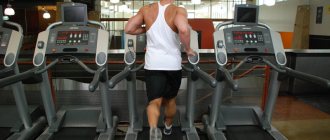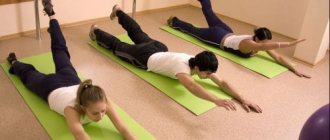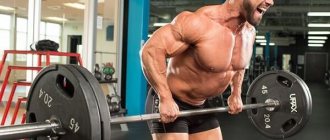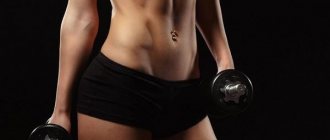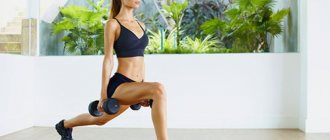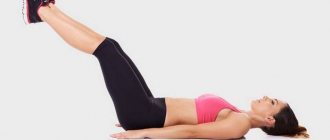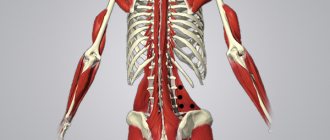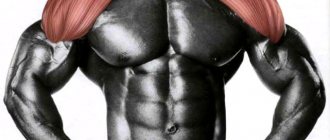When playing sports and physical activity, some people begin to feel out of breath and become easily fatigued. This is often due to problems with endurance and insufficient lung capacity. How to develop them and improve the respiratory process, we will consider in the article.
Pulmonary capacity is the volume of air that passes through the lungs during the respiratory cycle. It is easy to measure; all you need to do is release all the air from your lungs and inhale as deeply as possible. The average person has a pulmonary volume of approximately 3–3.5 liters; in professional swimmers it reaches 5 liters. Divers have the most developed lungs; they can hold up to 7 liters of air during a dive. It is known that each of us takes on average 16-20 breaths in 60 seconds, which is considered normal.
Lung volume can vary significantly among people, because it depends on:
- Susceptibility to respiratory pathologies.
- The health of the body as a whole.
- Professions and activities.
- Age.
- Level of usual loads.
- Paula.
- Lifestyle.
- Anatomical indicators.
- Living place.
For example, it has been proven that people who live in mountainous areas have a larger lung capacity than people living at sea level. This occurs due to increased oxygen conductivity in the tissues, due to the body’s adaptation to low atmospheric pressure at altitude.
Women, short or elderly people, and smokers have small lung volumes.
Regular comprehensive training of the lungs can develop them, improve the breathing of smokers, and those who have already said goodbye to this addiction, asthmatics and allergy sufferers.
The benefits of training
The intercostal muscles, diaphragm and back muscles are responsible for the respiratory process in the body. If you know how to train your lungs and systematically perform the necessary actions, you can significantly increase your breathing. Developing your lungs is useful because:
- Oxygen exchange improves. A person with developed lungs makes less effort to provide cells with oxygen, that is, takes fewer inhalations and exhalations.
- The level of endurance of the body increases. With sufficient saturation of cells with oxygen, human muscles are more resilient and strong. It’s not for nothing that athletes (football players, boxers) first try to train their lungs and only then start working on technique.
- Lung volume affects external changes. The larger it is, the wider the chest and shoulders of men, which is reflected in a positive aesthetic perception. And in women, the waist stands out more and the breasts visually rise.
If you develop your lungs, your respiratory system will be strengthened, your performance will increase and your well-being will improve.
Ways to develop lungs
A person is able to control his breathing, because he can hold it and control the speed. That is why, by acting on it, you can develop lungs. How can you improve your breathing using accessible and simple methods?
Here are some tips for training your lungs:
- Physical exercise. Regularly carry out loads for the shoulder girdle and chest.
- Sport. The following types are useful for improving breathing: running, speed skating, race walking, rowing, swimming, cycling, biathlon, skiing, mountaineering. Such volumetric loads improve the elasticity of blood vessels, develop the heart muscle and lungs.
- Hiking. It is necessary to walk in the fresh air every day and saturate the body with oxygen.
- Inflating a balloon. This simple method develops the respiratory system, since in the process of deep inhalations and exhalations, breathing reflexes are activated.
- Singing. Vocal therapy is beneficial for the respiratory system; it trains the muscles that are involved in the act of breathing.
- Laughter. Prolonged loud laughter activates the centers responsible for breathing. This occurs due to shorter breathing movements and a change in rhythm.
- Playing wind instruments. Helps to better control and train breathing.
Abstinence from bad habits, sports, hardening, timely treatment and prevention of respiratory pathologies are important aspects of caring for the lungs.
Exercises
To develop the lungs, there are many sets of exercises that can be performed to strengthen the respiratory system. It is useful to carry out training during or immediately after active physical activity, as this has a positive effect on the depth and speed of breathing. Exercises for developing the respiratory system can be different, among the most popular are:
- Carry out frequent and jerky breathing movements for 2 minutes. After the lungs get used to such training, the duration of the exercise can be increased.
- Release all the air from the respiratory tract, draw in full lungs of air in 2-3 short breaths, making short pauses between inhalations. After maximum filling, hold the air in your lungs for as long as possible.
- Take a deep breath and release the air in 2-3 steps. When the lungs become empty, hold your breath. So hold out longer.
- Inhale and count to 30. When the lungs get used to breathing loads of this kind, count more slowly the next time.
- Inhale in short, jerky movements and also exhale through your mouth.
- Take a deep breath, hold the air for 1–2 seconds, purse your lips as if to whistle, release the air forcefully, making small pauses. This is a yoga exercise that is aimed at cleansing the lungs.
- Stand up straight and inhale slowly through your nose. When there is a maximum amount of air in the lungs, stop breathing and hit the chest several times with little force. Exhaling, hit the upper chest with your fingertips. Such exercises help activate processes in the alveoli.
It is possible to develop your own respiratory system through systematic and rationally thought out training.
This is facilitated by sports that involve aerobic exercise, as well as special exercises.
“Aerobic” sports include running, race walking, cycling, swimming, cross-country skiing, speed skating, biathlon, rowing, mountaineering and many others. Volumetric training loads characteristic of these sports contribute to the development of the heart muscle, increasing lung capacity, improving vascular elasticity, and increasing nutrient reserves in all muscles and internal organs.
Swimming has a particularly positive effect on lung development.
. Indeed, during training, athletes are forced to hold their breath for a long time, which leads to an increase in lung volume and improved chest mobility.
As for special exercises, the following are considered the most effective.
Useful exercises to help increase lung capacity
If everything is really bad with your breathing, then before training you should perform the following complex every day for a month:
- diaphragmatic breathing with the stomach for four to six minutes (when inhaling, stick out the stomach as much as possible and draw as much air into the lungs as possible; when exhaling, draw the stomach in);
- chest breathing for five to ten minutes (the stomach is motionless, the inhalation is as deep as possible and the chest protrudes in parallel, and when exhaling it retracts);
- breathing at a fast pace, inhale on a count of two, exhale on a count of one (perform until dizzy);
- relaxed, as slow and deep breathing as possible.
If you have problems with the lungs and alveoli, it is better to do this breathing complex for a month before training. How to develop breathing capacity and endurance for asthmatics? In the presence of such a serious illness, even breathing exercises should be performed only with the approval of the attending physician. But don’t despair, because even if you have asthma, you can become an athlete - the main thing here is not to rush and increase the load very gradually.
Exercises for the lungs
- Take very sharp and frequent inhalations and exhalations for 1–2 minutes. After some time, the duration of the exercise can be increased.
- Try to squeeze out the maximum amount of air from your lungs as you exhale, and then inhale in several steps at short intervals. At the end of the inhalation, hold your breath for as long as possible.
- Take as deep a breath as possible and exhale the air in small portions and hold your breath as much as possible as you exhale until you feel like your lungs have shrunk in volume.
- As you inhale, count to ten, inhale a little more air, then count to ten again. Do this as many times as your lung capacity allows. Do the same as you exhale.
- Inhale while counting to 30. Over time, counting becomes slower.
- Inhale briefly and intermittently through your nose and exhale briefly and intermittently through your mouth.
Advice from a sports doctor for beginners
Safety precautions should be observed when performing athletics training that provides anaerobic exercise:
- Monitor your heart rate (ideally, you should purchase a wrist heart rate monitor and monitor the number of heart beats per minute), and if it accelerates to 130-140 beats per minute, stop the workout.
- During class, you can drink as much pure water as you want.
- If you feel dizzy or have dark vision, you should stop exercising.
- During exercise, you need to monitor your breathing and try to take slow but deep breaths (this will allow you to develop your breathing and endurance as quickly as possible).
- Try to move on to outdoor activities as quickly as possible - clean air ventilates well and heals the lungs.
Yoga exercises
Yoga offers many breathing exercises that allow you not only to develop the respiratory system, but also to improve the health of the entire body. It is better to learn them from masters, and we offer only the simplest of them, but, nevertheless, quite effective.
Cleansing the lungs
- We take a full breath.
- Hold your breath for a few seconds.
- We purse our lips as if we want to whistle.
- Without puffing out our cheeks, we exhale some of the air with considerable effort and stop for a few seconds.
- We repeat this in several steps.
Hold your breath - the exercise is designed to strengthen and develop the respiratory muscles and lungs, expand the chest
- Stand up straight and take a full breath
- Hold your breath for as long as possible
- Exhale forcefully through an open mouth
- Let's take a cleansing breath.
We activate processes in lung cells
- We stand up straight and slowly and gradually inhale the air.
- When your lungs are full, hold your breath and hit your chest with your palms.
- As you exhale, slowly hit your chest with your fingertips in different places.
- We do cleansing breathing.
Section:
Any sport involves serious stress, and our body’s resources are not always sufficient to withstand them. A striking example of this is, or popularly, “breathing”. If it is not developed enough, then no amount of physical strength will lead to the desired result. Therefore, one of the main tasks for any athlete is the development of breathing.
As you already understand, good breathing is mainly of interest to those for whom sports and a healthy lifestyle are more than just words or a hobby. Let's find out how to develop breathing in order to discover new heights in sports and make the body more resilient, which is much more important than any medals.
Classes in the hall
They include different sets of exercises, which are usually selected by a trainer. As a rule, the program includes the following breathing exercises in the gym:
- Squats.
- Tilts.
- Jerks and jerks.
- Push ups.
- Pull-ups.
The first three points are performed with equipment: dumbbells, kettlebells or a barbell. Their weight is selected based on your capabilities. For example, working with a barbell (bench press and squats) requires a product that makes up 70% of your weight. For beginners, the criterion is 30-40%.
For beginners, it is advisable to select weights with a parameter of no more than 12 kg. As the form develops, the weight of the projectile increases - up to 16 or 32 kg.
The minimum weight of dumbbells is 6 kg. For shadowboxing – 1-1.5 kg.
An excellent effect on the development of the respiratory tract is the following exercise:
The stand is straight. The air is inhaled with the entire chest and held for half a minute (if it is too heavy - for 10-20 seconds). Synchronously, both arms, holding dumbbells up to 6 kg, are extended forward and held at the shoulder line. After the specified interval, a sharp exhalation follows.
Then the situation is repeated, only the arms are pulled back.
If your physical potential allows, the weight of the apparatus can be increased to 8-10 kg or you can work with weights.
How to strengthen the respiratory system
The development of the respiratory organs is promoted by systematic aerobic exercise. Key sports that develop breathing include: running, swimming, mountaineering, cycling, rowing, speed skating and race walking. Exercise helps increase lung capacity and strengthen the heart. With regular exercise, the condition of the blood vessels improves: they become more elastic.
Aerobic exercise strengthens the body as a whole. Its ability to withstand heavy loads over a long period of time is called endurance. Don’t think that only professional athletes or law enforcement officers need endurance. A person leading cannot do without it.
Triathlon to help
To the question “How to develop endurance and breathing at home,” the answer will be “Do a triathlon.” This sport has also established itself as an auxiliary tool that is included in the training program of many athletes (for example, Nate Diaz and even special forces training).
If you really want, it is not so difficult to find a pond for swimming, a treadmill and the most ordinary bicycle because... triathlon includes running, swimming and cycling. The athlete must continuously complete all three stages. According to primary sources, it is known that the first triathlon competitions included the following distances: running a distance of 3 km, cycling a distance of 12 km and crossing a canal by swimming. Of course, the program can be customized to suit you. It is better to do triathlon with someone in pairs or even in a group because... in this case there will be an adversarial aspect.
Who needs it and why?
A hike in the forest, a bike ride, working in the garden - all this and much more requires resources from the body. And even a long shopping trip can turn into a nightmare if you don't have enough stamina.
Trained and resilient people look much better than those who are lazy or constantly need special motivation. They are always fit, dignified, and, of course, there are no extra pounds. Such people move accurately, quickly, and confidently. However, external changes are only the first side of the coin. There are also internal changes. With constant and competent training, the composition of the blood changes (the number of red cells increases), which helps enrich the internal organs with oxygen. The respiratory muscles of trained people are stronger, as is the heart muscle.
Motivation
By and large, many people have known since childhood how to develop breathing and endurance. The simplest exercise for this is running. However, not everyone takes care of their health. Scientists have repeatedly proven that ancient people were incredibly strong, fast and resilient. They had to do a lot of cross-country running. Why did ancient people run so much? The answer is simple: to get food or not to become food ourselves. This example proves how big a role motivation plays.
Anyone who cannot convince himself that he needs to work for the sake of health will receive nothing but suffering from a sports lifestyle. After all, for quality training you need to give up your usual cozy and comfortable lifestyle. So you need to look at training as a way to add youth, positivity, beauty and a few valuable years to your life. It’s not enough to know how to develop breathing, it’s important to understand why it’s being done and to be able to force yourself.
Why is running so difficult?
Running is simple, fashionable and healthy:
- You can train at any time of the year;
- There is no need to buy any additional equipment for classes;
- You can run near your home or in the nearest park; there is no need to go to a gym located on the other side of the city;
- Jogging will only improve your health; there are simply no negative effects.
And the inspired future athlete goes out to the stadium, makes a circle, tries to go second and realizes that something is wrong with him.
Not at all like that:
- Breathing became unsteady;
- Begins to stab in the side;
- The heart is ready to jump out of the esophagus;
- The leg muscles are tired;
- It's getting dark before my eyes/
All these “bells” indicate that someone is either not naturally resilient, or has been sitting in an office chair for too long and has completely neglected himself. In any case, you need to do something and improve your performance. Gradually, overcoming yourself and trying.
And one more thing - once you decide to “pump up” your endurance, you will have to do this for a very long time. After all, the results regress quickly as soon as the additional loads go away.
It is not possible to become resilient once in your life and remain so for the rest of your days, without training and exercise.
What kind of endurance is there?
The concept of endurance covers a fairly wide range of physical characteristics of the body. Respiratory endurance is mainly divided into two types: anaerobic and aerobic.
Anaerobic endurance expresses the body's ability to perform any physical work without the required amount of oxygen. That is, to perform some action, the body spends only internal resources. This type of endurance is developed by performing a large number of exercises in a limited period of time.
Aerobic endurance is the body’s ability to perform work using oxygen. This typically requires a variety of exercises with long sets.
There are also special and general endurance. The first is a distinctive feature of athletes who perform the same action for a long time, achieving perfection in it. Well, the second one is needed by ordinary people who are not chasing medals, but the health and tone of all the muscles and organs of the body. Everyone chooses for themselves what type of endurance to develop - it all depends on the goal.
This is a fairly common question, since many people run, and the lion's share of them are not professional athletes. Such people usually have no problems with excess weight, their body is always in good shape, and their mood is high. While jogging, the respiratory organs begin to work much faster, and the blood is enriched with oxygen, supplying the internal organs and the brain.
If you are starting to join the running culture, then you should pay attention to three main principles: gradualism, consistency, and acceptability. Let's look at each of them.
- Gradualism. From the first day you should not take on hours of training. You need to increase the distance carefully, controlling the pace and your condition. Those who decide to use running to restore their respiratory system after smoking should be especially careful with the intensity of their training. It must be remembered that the body must rest well and recover from the stress it has endured.
- Systematicity. To achieve even the smallest results, you need to perform exercises regularly. This is the only way to improve your endurance and physical condition.
- Eligibility. The load should be enjoyable and nothing else. If every workout is torture, but you run twice as much, soon the desire to run will disappear. Let it be better the other way around - a small race, done correctly and with pleasure.
Will sport replace war?
In many ways, sport was supposed to replace military action, but it didn’t work out:
- Sports competitions have been known since ancient times;
- At best, wars were suspended for the duration of the war, but there was no talk of achieving long-term peace;
- Countries have exhibited and continue to exhibit their athletes as gladiators in confrontation with each other;
- Another sports victory is a reason for joy and pride for a couple of days or even longer for the whole country;
- It was not possible to sublimate all the aggression and direct it into a peaceful direction;
- Sports began to look more like politics than war itself.
It would probably be easier to live if conflict situations were resolved not through combat, with the participation and death of millions of soldiers, but through sports or intellectual competitions. Whose “gladiator” won is right.
Although even this looks like a dubious solution to really important problems
. The prospect of getting rid of senseless bloodshed, but it is too early to talk about justice.
And no one will accept such a scenario where, in case of loss, you can still “put a couple of million soldiers under arms” and go on the offensive.
Home workouts
Many people are interested in how to train breathing for running at home. Of course, to be good at running, you need to run. But you can make your body more resilient and your body fit at home. To do this, you don’t need to buy expensive exercise equipment. Any physical exercise (push-ups, pull-ups, jumping jacks, etc.) has a positive effect on respiratory endurance. An excellent exercise is jumping, which will not only help tighten the whole body, but also give a good workout to the respiratory system. A very simple way to develop breathing at home is to inflate balloons. This simple procedure perfectly trains the lungs and heart.
Swimming, like running, is a sport in which breathing plays a crucial role, especially if it is swimming underwater. If a swimmer does not know how to breathe correctly, he will not be able to conquer long distances. Let's look at the pair of breaths when swimming.
- While standing in the water, you need to inhale and immerse your face in the water, while holding your breath. Then you need to make two slow swings of your arms. Starting the second swing, you need to start exhaling air into the water; by the end of the swing, you should complete the exhalation and raise your head above the water. Then inhale and the exercise is repeated.
- The exercise is also performed at shallow depths. After taking a deep breath, you need to plunge into the water. Slowly exhale all the air so that the lungs become completely empty. After staying for a couple of seconds without air, you can come up and breathe again. Then everything is repeated. It is advisable to do this exercise energetically and rhythmically, spending a minimum amount of time above the water.
These exercises are very simple, but they answer the question of how to develop breathing for swimming underwater and just swimming.
The Best Athletics Workouts You Can Do in Your Apartment
Here is a list of the most popular classes from professional trainers aimed at increasing anaerobic endurance:
- “Burn Fat, Speed Up Metabolism” by Jillian Michaels;
- “Insanity” by Shaun T;
- “How to Achieve Perfection” by Cindy Crawford.
These workouts will help increase your overall endurance. They are not used to build muscle mass; these are specifically classes for beginner athletes. If a beginner is interested in the question of how to develop breathing and endurance in boxing, kickboxing, karate, then you should also turn your attention to similar training for track and field athletes.
In any sport, anaerobic endurance is important; without it, the athlete will simply break out in sweat and go to rest on the bench after ten minutes of active movements.
Who needs a strong respiratory system?
Athletes ask the question: how to develop breathing? To do this, it is important to follow a special exercise regimen that represents aerobic exercise. A good respiratory system is necessary for the following sports:
- Mountaineering.
- Rowing.
- Cycling and speed skating.
- Race walking.
With such physical activity, the volume of the lungs increases and the heart muscle develops. With regular exercise, blood vessels improve and become elastic, the human body becomes stronger.
If a person is able to withstand heavy loads for a long time, then he is resilient. This skill is necessary for professional athletes, for riding a bicycle, working in the country, and even when shopping.
Hardy and trained people look fit and healthy. They are not overweight because they are motivated. Such people move quickly, accurately and confidently. Training helps you change externally and internally. The composition of the blood undergoes changes - the number of blood cells increases, which enriches the body with oxygen. The respiratory muscles become better, the heart muscle strengthens.
Endurance can be developed while running. Motivation plays a big role. Without it, it is impossible to achieve a positive result; the respiratory system will not become strong. To develop this quality, it is necessary to change your usual lifestyle.
There are two types of endurance:
- Anaerobic.
- Aerobic.
The first type provides the opportunity to perform exercises without the required amount of oxygen. To do this, the body uses only internal resources. This endurance is developed by completing training with a limited amount of time.
The aerobic type is based on oxygen nutrition. However, the number of exercises performed is limited. Special and general endurance are also distinguished.
Breathing training: endurance exercises in the gym and at home
Hello, friends. Which breathing exercises you need to use depends on your goals and physical level. The place of training also matters; it could be your home or apartment, a gym, or a place somewhere in nature. You can build the program yourself or with a specialist. One way or another, certain criteria and load limits must be observed.
A healthy and strong respiratory system is one of the most important elements for almost all athletes, whether amateur or professional. Here the question arises: how to develop it, what exercises are used in specific cases, and is it possible to exercise with a heart condition? The answers to these questions are reflected in this material.
How to develop breathing?
Many people are interested in the question: how to train breathing for running at home? For such activities you do not need expensive equipment and equipment. A certain set of exercises is enough to help you restore lost muscle mass, improve your health, and become strong and resilient.
It is possible to perform jumping jacks, push-ups and pull-ups. Balloons are also inflated to train the lungs and heart muscles. More attention should be paid to the rib muscles, which move and move apart when breathing. To strengthen this part of the body, you should hold your breath during training.
There are the following exercises for breathing training:
- Frequent inhalations and exhalations.
- Exhale a large amount of air at a time, and then inhale at short intervals, holding your breath at the end.
- Take a big breath, and then exhale in small parts. At the end, hold your breath.
- Inhale, count to ten, then inhale again and count.
- Inhale through your nose and exhale through your mouth.
A good breather is needed for running, which is useful for a person, even if he is not an athlete.
For professionals, it is not difficult to maintain a normal body and weight, and they are always in a great mood. While running, the respiratory organs begin to function much faster and better, and more oxygen appears in the blood. The brain and other internal organs receive the right amount of air and begin to work better.
Before developing your breathing for running, it is important to listen to the advice of experts. For a healthy lifestyle, the following factors should be taken into account:
- Gradualism.
- Systematicity.
- Eligibility.
Exercises and loads should be gradual. You don't need to do hours of training all at once. If a person has such a bad habit as smoking, then one should carefully and gradually engage in physical activity. Do not overload the body. Proper and complete rest is important.
Running distances also need to be gradually increased. In this case, you need to take into account the pace at which a person runs. To achieve a positive result, you should train regularly and systematically.
The loads performed should not cause pain to the person. They must give pleasure in order to feel comfortable. If you don’t have the strength to run to the end of the distance, there is no need to suffer. It’s better to let it be a small race, but done correctly. This will be more beneficial.
To train the respiratory system, not only jogging is used, but also various outdoor games and exercises. A great option is a jump rope. With regular use of the equipment, a person is filled with energy, strength and health. Jumping rope develops the heart muscle. If you follow the recommendations of specialists and perform the exercises correctly, a positive result will not take long to come.
Why and how do we breathe? Few of us think about this. Meanwhile, the functioning of the respiratory system can be improved and you can live an even better quality of life.
The human respiratory system was studied back in Ancient Greece and Ancient Rome, but only in the Middle Ages did scientists begin to pay more attention to it. In the 13th century, the famous Arab physician Ibn al-Nafis was the first in the world to describe pulmonary circulation. Nowadays, doctors even perform lung transplant surgeries (the first such operation was performed in 1983 in Canada by Dr. Joel D. Cooper).
What is important to know?
You will be surprised to know that there are several types of breathing techniques available today. However, they have the same basic principle - breathing should be easy, relaxed, natural.
But at the initial stage, it is very difficult for athletes starting to practice running to synchronize their actions, combining the correct placement of the feet, holding the body in the correct position and at the same time breathing freely. It is worth noting that such experience comes with time. The main thing is to set a specific goal for yourself and be patient.
Jogging begins to bring real pleasure only when not only breathing, but all movements are natural. And, if you are an amateur, then it is not important for you to focus on your breathing, just trying to breathe comfortably during training. If you choose a more professional approach to training, then, depending on the preferred type of running, you will have to master the appropriate breathing technique.
For example, running to improve your health should be accompanied by relaxed and free breathing without difficulty. In this case, breathing movements should be performed only through the nose. If such cardio training is difficult for a beginner and he begins to feel out of breath, he will have to reduce the intensity (pace) of his runs in order to learn to breathe through his nose. Over time, you can gradually increase the load, while monitoring your well-being and ability to breathe freely.
If it is absolutely difficult for an athlete to breathe through the nose while running, this may indicate oxygen starvation of the body. For such a situation, short-term breathing through the mouth (for a few seconds while jogging) will even be useful. Especially in cases where the runner practices his exercises in the forest or near bodies of water.
What do we know about the human respiratory system?
During breathing, the human body receives oxygen, while releasing carbon dioxide, water vapor and some other metabolic products into the environment.
The human respiratory system consists of several organs, each of which is irreplaceable. However, first of all you should pay attention to the lungs, which carry out.
The lungs are a paired organ (there is a right and a left lung). Each lung is covered with pleura. This organ is located in the chest cavity. It consists of millions of microscopic vesicles (alvioles). This is where the gas exchange process takes place.
. Air is delivered to them through the tracheobronchial tree, starting from the trachea. After the air reaches the terminal bronchioles, it enters the respiratory sections of the lung.
Watch the VIDEO “How the lungs work”
They collect oxygen in the lungs, and then transfer it to one or another part of the body where it is needed. At this time, red blood cells absorb carbon dioxide, and then deliver it to the lungs, from where it is removed during breathing.
The human body needs oxygen vitally. Its deficiency leads to, which can negatively affect the central nervous system, heart, kidneys, liver, and cause irreversible changes in them.
Complete lack of oxygen in the body
or in a specific area of the body, an organ is called anoxia. It can develop with poor blood circulation, a decrease in red blood cells or hemoglobin in the blood, disorders in the respiratory system, etc.
Within 4 minutes without oxygen, brain cells begin to die. This can lead to brain damage and ultimately death.
Our breathing rate depends on our age.
For example, the normal breathing rate for newborn babies is 40 breaths per minute (during sleep, the breathing rate usually decreases to 20-40 breaths per minute).
According to the American Johns Hopkins University, for adults the average respiratory rate is from 12 to 16 breaths per minute. During physical activity, breathing accelerates to an average of 45 breaths per minute.
Actions for a sick heart
Heart disease significantly complicates physical development and life itself. However, cardiologists have developed breathing exercises for ischemic heart disease (coronary artery disease) and angina. This is an effective complex. But before using it, the patient must consult a doctor.
The program includes three blocks:
The first is warm-up. Here the body warms up and prepares for subsequent work. The following points are performed:
- You need to stand up straight. The position of the legs is identical to the width of the shoulders. Take turns slowly tilting your body in all directions, while looking straight. The number of repetitions is 10-15.
- Hands rise to the limit. Stand on your toes and reach up to the ceiling. Return to the starting position. Number of repetitions – 10.
- Lie on your back on a yoga mat. The legs and arms are spread to the sides to the maximum possible extent, and the muscles should not be overly tense. Bend your fingers and toes alternately. The pace is average. Reps – 6-7.
Here, try to act as relaxed as possible and normalize your breathing.
- In the same position (lying on the mat), point your toes outward and inward. Load – 5-6 repetitions.
The second one is the main one. It is carried out in a lying position, at a measured pace and constant control of breathing. Its operating algorithm:
- Pull your shoulders as high as possible, trying to touch the tips of your ears. Repetitions – 6.
- The arms are bent at the elbows, the legs are bent at the knees. Describe a circle with your limbs one at a time. The load on each leg and arms is 4-5 repetitions.
- Bridge. In this case, the lower back does not come off the floor. The pelvis rises as high as possible. And so - 3 times.
- Spreading the knees to the sides. 4-5 repetitions.
The third is a hitch. The effect of the previous exercises is consolidated here. Walk slowly in place for 1-2 minutes.
The indicated complex is performed 2-3 times a day. Gradually the load increases. All work must be constantly monitored by the attending physician.
The functioning of the human respiratory system
Oxygen enters the human body through the nose and mouth. The air-bearing cranial bones contain sinuses, which are often called the paranasal sinuses. They help regulate the temperature and humidity of the air we breathe.
The structure of the respiratory system - popular video clip
Through the throat, air enters the trachea, located in front of the bronchi. There it is filtered, after which it immediately enters the bronchi, which are two tubes. Inside the bronchial tubes there are tiny hairs called cilia. The bronchi contain a special sticky liquid (mucus) that collects dust, germs and other substances, preventing them from entering the lungs. This mucus comes out when you cough, sneeze, or spit.
The bronchial tubes end in terminal bronchioles, which branch into respiratory bronchioles, from which the respiratory sections of the lungs (acini) begin. The right lung consists of 3, and the left lung of 2 lobes. They are filled with microscopic bubbles (alveoli), where gas exchange occurs between blood and air. There are usually up to 700 million alveoli in the lungs.
The alveolar walls, consisting of epithelial cells, are extremely thin (about 0.2 μm). This allows for rapid gas exchange with tiny blood vessels (called pulmonary capillaries). Blood passes through capillaries. The pulmonary artery carries blood containing carbon dioxide to the air sacs, where the gas moves from the blood into the air. Oxygenated blood enters the left atrium through the pulmonary veins, and from there it is pumped throughout the body.
Breathing is controlled by the diaphragm, an unpaired muscle that separates the chest and abdominal cavities. When a person inhales, the diaphragm rises, allowing more room for air. During exhalation, this muscle displaces air. ventilation occurs
.
What happens if you hold your breath for 3 or more minutes?
How to learn to hold your breath underwater?
Respiratory system diseases
Diseases of the respiratory system are divided into two categories - viruses (influenza, bacterial pneumonia, adenovirus infection) and chronic diseases (for example, asthma and chronic obstructive pulmonary disease). Chronic diseases include lung cancer, which kills hundreds of thousands of people around the world every year. Thus, in the United States, up to 24,000 people die every year from lung cancer, many of whom have never even smoked.
Pulmonologists specialize in the diagnosis and treatment of diseases of the respiratory system. In the United States, in order to be able to treat diseases of the respiratory system, a doctor must first be certified by the American Board of Internal Medicine and then receive additional training in this specialization.
To diagnose lung diseases, chest x-ray and Pulmonary Function Test (PFT)
. The PFT test measures the amount of air entering and exiting the lungs.
The condition of the bronchi and trachea is determined by a method in which an endoscope is inserted into the respiratory tract. Bronchoscopy allows you to detect bleeding, tumors, and inflammation.
Thoracoscopy is used to examine the surfaces of the lungs. With this method, the pleural cavity is examined using a thoracoscope, which is inserted through a puncture in the chest wall.

